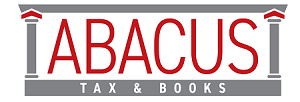The New Era of Bookkeeping Services: From Reactive to Predictive Finance
For decades, bookkeeping had a vibe: neat stacks of reconciled statements, tidy trial balances, and a mysterious drawer of receipts that somehow always contained one that mattered. Useful? Absolutely. Strategic? Only in hindsight. The traditional model told us where money had been. What it didn’t do at least not by default was tell us where money was going.
That’s changing fast. The new era of bookkeeping is less rearview mirror and more windshield—predictive finance that helps owners make decisions before the month ends, not after the year closes. If you’ve ever wished your financials would whisper, “hire now,” “raise prices here,” or “brace for a cash dip in eight weeks,” predictive bookkeeping is that whisper, amplified and graphed.
Let’s unpack what this shift means, how it actually works, and why the next competitive advantage isn’t just clean books—it’s forward-looking books.
How Does Predictive Finance Change The Way Businesses Manage Their Finances?
Reactive bookkeeping answers, “What happened?” Predictive bookkeeping asks, “What’s about to happen and what should we do about it?” That sounds like a small linguistic tweak; it’s a gigantic operational change.
Here’s the practical difference you feel day-to-day:
- Continuous decisions vs. periodic surprises
Instead of discovering a profitability slump after month-end, predictive models flag the trend in week two and simulate fixes: reduce overtime, shift marketing spend, or adjust inventory reorder points. - Proactive cash choreography
Cash flow forecasts don’t just plot a single line; they model scenarios: “What if we offer early-pay discounts?” “What if we push out that capital purchase?” “What if Q4 sales mirror last year’s, minus 8%?” Instead of hoping, you rehearse. - Capacity and hiring with data, not vibes
Work-in-progress (WIP) + pipeline forecasting predicts when your team hits a wall. You can hire or subcontract before quality slips or rush fees eat margin. - Price strategy with teeth
Dynamic margin analysis compares product/service mix against cost drift. If freight climbs 11% or vendor discounts expire, your pricing dashboard blinks before your profit does. - Inventory without the heartburn
Forecasts pair seasonality with vendor lead times to set reorder points that breathe with demand. Shelves stop yo-yoing between “out of stock” and “why do we own a pallet of this?”
Fundamentally, predictive finance reframes bookkeeping from reporting to navigation. Owners stop asking, “How did we do?” and start asking, “Which lever should we pull this week?”
What Are The Key Benefits Of Transitioning From Reactive To Predictive Bookkeeping?
Let’s be blunt: nobody invests in a new finance approach for sport. You switch because the math and the sanity both improve.
- Fewer emergency decisions
Fire drills cost money—rush shipping, overtime, discounting to move old inventory. Predictive signals turn cliff-edges into gentle ramps. - Stronger cash position
Collections get sequenced, vendor terms get optimized, and excess inventory gets trimmed before cash gets tight. It’s amazing how much cheaper life is when you’re not in a hurry. - Higher confidence with lenders and investors
When your forecast is coherent and consistently close, bankers treat you like a grown-up. Lines of credit, covenant conversations, and raises get easier. - Team alignment
Sales, ops, and finance see the same future. When the forecast says “push product B next month,” marketing plans campaigns and ops tunes capacity. You stop arguing about opinions and start collaborating around a shared dataset. - Time back
Ironically, looking forward saves hours. When your forecast engine pulls from live books, CRM, and ops tools, the “where are we?” meeting gets shorter—and the “what will we do?” meeting gets smarter. - Better pricing and product mix
Predictive margin analysis is a ruthless friend. It makes unprofitable darlings obvious and high-margin sleepers impossible to ignore. - Resilience
Markets hiccup. Predictive models don’t prevent shocks, but they absorb them better. You spot the ripple faster and adjust course with less drama.
In short: better results, calmer days, fewer oops.
How Can Predictive Finance Help Businesses Plan For Future Financial Growth?
Growth is glamorous on Instagram and exhausting in real life. Predictive finance helps you grow without breaking the systems that got you here.
1) Capacity planning that respects physics
Tie sales pipeline probabilities to production hours and vendor lead times. The model tells you when next quarter’s wins will overload your team, which roles to recruit, and when. You don’t need heroics; you need a calendar.
2) Capital expenditure timing
Map equipment purchases against cash peaks and troughs, then model tax treatment (expensing vs. depreciation) and financing options. Growth stays liquid instead of lumpy.
3) Geographic or product expansion
Simulate a new market or SKU line using comps from your historical data: customer acquisition cost (CAC), payback period, service burden, and gross margin drift. You’ll know if this expansion scales profitably before you ship the first unit.
4) Pricing scenarios
Small price changes have outsized effects. Forecast demand elasticity, then test price + discount ladders. Predictive models show you whether a 3% increase preserves volume—and margin.
5) Cohort health
Not all customers age the same. Cohort analysis predicts churn, upsell moments, and support costs by acquisition wave. Growth plans move from “more customers” to “more of the right customers.”
6) Headcount and comp strategy
Tie labor cost forecasts to revenue per FTE and margin targets. The model warns when payroll growth is outpacing gross profit so you adjust comp mix or role design early.
7) Debt & runway planning
Blend operating forecast with debt schedules and covenants. If the model flags a coverage ratio dip six months out, you address it with pricing, costs, or financing now, not during the bank’s surprise call.
Predictive finance doesn’t guarantee growth, but it de-risks it. That, in practice, is what separates a leap from a stumble.
What Tools are Used in Predictive Bookkeeping to Forecast Financial Trends?
Let’s demystify the toolbox. You don’t need a PhD or a server farm. You need clean data, the right connectors, and repeatable models.
- Live accounting platforms with open APIs
QuickBooks Online, Xero, and similar tools stream transactions in real time. Predictive bookkeeping depends on fresh data, not monthly CSV rituals. - FP&A and forecasting apps
Tools like Float, Fathom, Jirav, LivePlan, or Spotlight connect to your GL and build rolling 13-week cash forecasts, driver-based budgets, and scenario models. Driver-based is key: revenue ≠ magic; it’s units × price × conversion × seasonality. - Business intelligence (BI)
Power BI, Looker Studio, or Tableau pull from accounting, CRM, and ops. You’ll visualize leading indicators (pipeline, WIP, backlog) alongside financials to predict before the ledger does. - Revenue and subscription analytics
For SaaS and services, ChartMogul, Baremetrics, or ProfitWell monitor MRR, churn, and LTV/CAC. Forecasting growth without cohort metrics is guesswork. - Inventory + demand planning
Unleashed, DEAR/Cin7, or Katana combine BOMs, lead times, and sales velocity to set reorder points that adjust with demand. - Machine learning-assisted forecasting (optional but powerful)
Light-touch ML (Prophet, Holt-Winters, ARIMA models inside various platforms) helps detect seasonality and trend shifts faster than spreadsheet intuition. - Workflow & collaboration
Practice management (Karbon, Asana, ClickUp) keeps assumptions, approvals, and tasks documented so your forecast is a process, not a personality. - Data hygiene & controls
Bank feeds, rules, and lock dates reduce noise. Without clean inputs, even the fanciest model is just a polite hallucination.
One more tool that’s more mindset than software: playbooks. Define what you’ll do when a forecast crosses a threshold—hiring triggers, discount moratoriums, expense freezes, price adjustments. A great forecast without a playbook is just pretty art.
Ready to Run Your Business One Quarter Ahead?
If you’re done steering by last month’s P&L, we’ll help you build a finance function that looks ahead: rolling cash projections, driver-based budgets, scenario planning, and dashboards your whole team can read at a glance. At Abacus Tax & Books, we blend sharp bookkeeping with FP&A discipline so your decisions feel calmer—and your results feel intentional.
Let’s put the future on your calendar. Book a quick discovery with Abacus Tax & Books, and we’ll map the two or three levers that move your world—and the forecast that keeps you one step in front of them.

